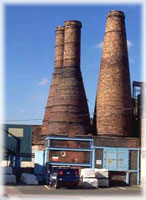![]()
| Stoke-on-Trent, North Staffordshire |
|
| What is a listed building? |
| Listed Building Index | What is a Listed Building? |
Basically, the older the building is the more likely it
is to be listed. All buildings built before 1700, and most buildings built
between 1700 to 1840, are listed. After 1840, so many buildings were put
up that only the best examples of particular types get listed. Buildings
that are post-1914, and that are of outstanding quality or are under
threat are also chosen for listing.
be listed. All buildings built before 1700, and most buildings built
between 1700 to 1840, are listed. After 1840, so many buildings were put
up that only the best examples of particular types get listed. Buildings
that are post-1914, and that are of outstanding quality or are under
threat are also chosen for listing.Later buildings are listed by theme, such as cinemas or industrial buildings. Some otherwise unremarkable buildings have been listed for their historical associations. To find out if a building is listed:
For further information on listed buildings, contact the
following: Images
of England is a wonderful site where volunteer photographers
are cataloguing all the listed structures in England. Architectural Heritage Fund can advise on funding and its website lists all the small preservation societies in the country. The Architectural Heritage Society Scotland advises on listed-building works in Scotland. The Institute of Historic Building Conservation is the body to which most local-authority Conservation Officers belong. Save Britain's Heritage campaigns for buildings of historic interest that are in danger. It also publishes a list of those in most need of protection. Ulster Architectural Heritage Society, the arbiter of listed-building control in Northern Ireland.
Useful Government departments and bodies:
|
[ Questions / Comments / Contributions ? email: Steven Birks ]